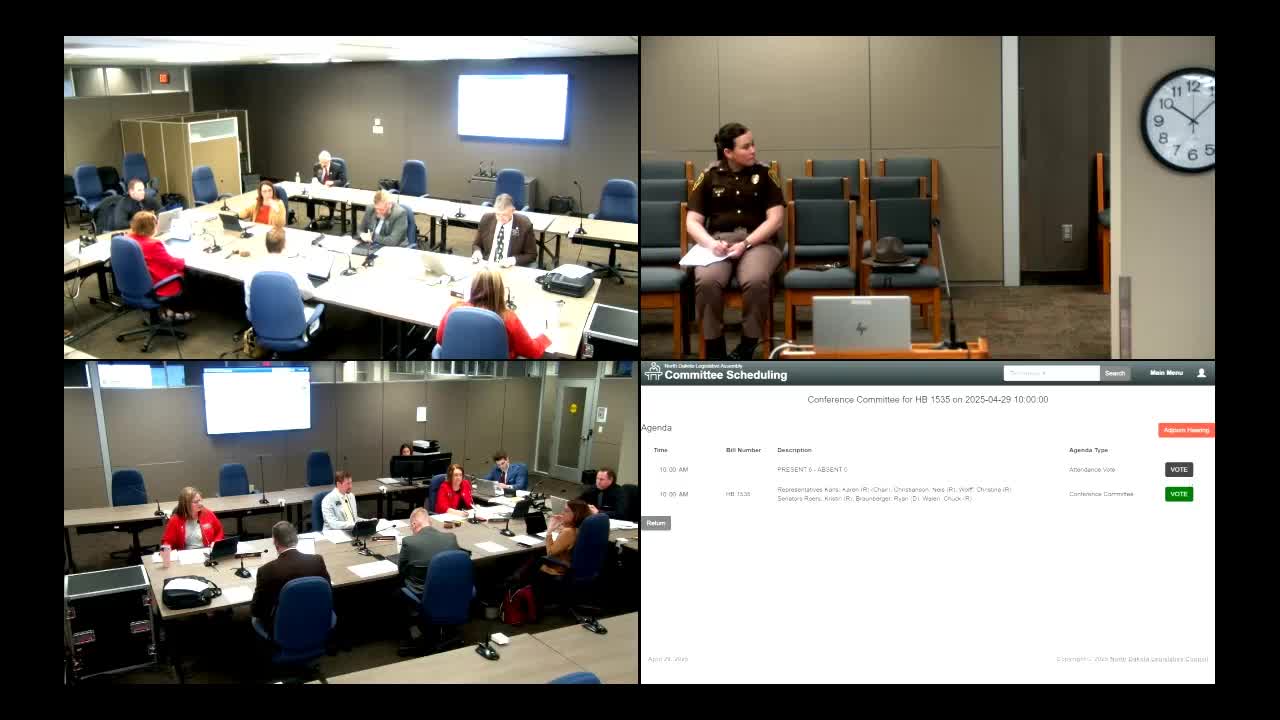Ohio lawmakers refine emergency alert system communication requirements
April 29, 2025 | House of Representatives, Legislative, North Dakota
This article was created by AI summarizing key points discussed. AI makes mistakes, so for full details and context, please refer to the video of the full meeting. Please report any errors so we can fix them. Report an error »

During a recent conference committee meeting on April 29, 2025, North Dakota lawmakers made significant strides toward enhancing the state's emergency alert system. The committee discussed proposed amendments to House Bill 1535, focusing on improving communication methods for alerting the public about missing or endangered persons.
One of the key discussions centered around the language of the bill, particularly the requirement for law enforcement to utilize at least one method of communication from a specified list. Lawmakers debated the wording, considering a shift from "may use" to "shall use" to ensure that authorities are mandated to take action. This change aims to establish clear expectations for law enforcement agencies, ensuring they cannot remain inactive in critical situations.
The committee also explored the inclusion of various communication channels, such as the Emergency Alert System, social media platforms, and local alerting systems. There was a consensus on the importance of flexibility in the language to allow for the adoption of new and effective methods as they emerge. Lawmakers expressed a desire to avoid limiting the response options to a fixed list, recognizing that future technologies may offer better solutions.
The committee's discussions reflect a proactive approach to public safety, emphasizing the need for clear guidelines that compel action while allowing for adaptability. As the bill moves forward, the proposed amendments are expected to enhance the effectiveness of emergency alerts, ultimately benefiting the community by ensuring timely and efficient communication during critical incidents.
The next steps will involve finalizing the language of the bill and preparing it for a vote, with lawmakers optimistic about its potential impact on public safety in North Dakota.
One of the key discussions centered around the language of the bill, particularly the requirement for law enforcement to utilize at least one method of communication from a specified list. Lawmakers debated the wording, considering a shift from "may use" to "shall use" to ensure that authorities are mandated to take action. This change aims to establish clear expectations for law enforcement agencies, ensuring they cannot remain inactive in critical situations.
The committee also explored the inclusion of various communication channels, such as the Emergency Alert System, social media platforms, and local alerting systems. There was a consensus on the importance of flexibility in the language to allow for the adoption of new and effective methods as they emerge. Lawmakers expressed a desire to avoid limiting the response options to a fixed list, recognizing that future technologies may offer better solutions.
The committee's discussions reflect a proactive approach to public safety, emphasizing the need for clear guidelines that compel action while allowing for adaptability. As the bill moves forward, the proposed amendments are expected to enhance the effectiveness of emergency alerts, ultimately benefiting the community by ensuring timely and efficient communication during critical incidents.
The next steps will involve finalizing the language of the bill and preparing it for a vote, with lawmakers optimistic about its potential impact on public safety in North Dakota.
View full meeting
This article is based on a recent meeting—watch the full video and explore the complete transcript for deeper insights into the discussion.
View full meeting
